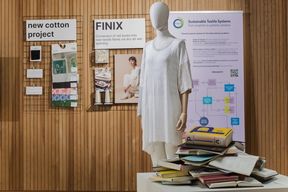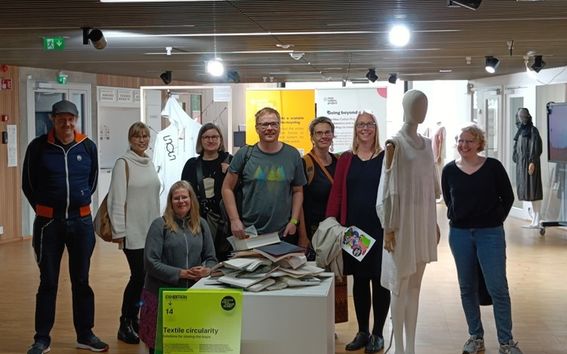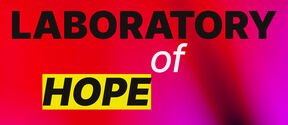Aalto University and Pääkaupunkiseudun Kierrätyskeskus Oy explored new ways to recycle discarded books

To demonstrate that old books are more than a second-class source of paper, the Pääkaupunkiseudun Kierrätyskeskus Oy (Helsinki Metropolitan Area Reuse Centre Ltd.) and Aalto University initiated a study to upcycle old books into new textiles. Anu Hakala, Sustainability Specialist at Kierrätyskesus, says 'We receive a lot of books as donations, and we either sell or donate most of them for reuse as books. Kierrätyskeskus has an agreement with the local waste management operator that allows for the sorting of non-usable books into the paper fraction. However, this is not the case for households, as the current sorting guidelines direct books to be sorted into mixed waste, which is incinerated for energy recovery. We wanted to initiate a discussion on this topic and explore new ways to recycle book materials.'
'Even though we knew that this might be a challenging project we wanted to show that discarded books can become valuable products again,' says Prof. Michael Hummel from the School of Chemical Engineering at Aalto University. Together with his pulping specialist Dr. Quang Le Huy and fiber spinning expert Dr. Inge Schlapp-Hackl, the team pick up rejected books from Kierrätyskesus and started to process them into textile fibers. A challenging undertaking because discarded books may have been produced in the recent years or decades ago. Therefore, the quality of the paper and the composition of the ink can vary vastly. The pre-pretreatment was difficult and time-consuming but eventually a substrate was obtained that could be spun into textile fibers using the Ioncell® process developed by Aalto University and the University of Helsinki.
Textile design specialists under the lead of Prof. Kirsi Niinimäki at the School of Arts, Design, and Architecture then started to think about a prototype product.
'In order to process the books into fibers, their pages were shredded, and this became a point of inspiration for the design of the prototype product. The fragmented strips of text and images were re-assembled as a collage, then translated as an artwork for a knit with an asymmetrical silhouette. This way, the source of the yarn was expressed in the final design. For the final prototype, a combination of treated and untreated book yarn was used in combination with Lyocell yarn,' says Kasia Gorniak, doctoral researcher at Aalto.
The final showcase garment includes fibers spun from paper with and without ink residuals to demonstrate how residual impurities can affect the properties of the final textile. 'The dress has recently been on display in the exhibition ’Textile Circularity’, part of Design For Cooler Planets, Helsinki Design Week 2023.’
Despite the successful production of prototype textiles from book paper, the study showed that turning discarded books into textiles is unlikely to become a business case. The inhomogeneity and complexity of book-waste makes the pre-treatment very costly and with its own environmental impact. So for now, it remains best to pass on books as often as possible and rather recycle the knowledge and information that they contain before reusing the material they are printed on.
Currently, books should not be disposed as wastepaper, but instead thrown into the mixed waste and incinerated. These sorting instructions for books provided by the Helsinki Region Environmental Services Authority HSY are based on the waste legislation and a request from the party responsible for paper recycling. As a response, the Ministry of the Environment is planning to subject books to extended producer responsibility.[1] This will make it mandatory to recycle books. However, books represent a multi-material waste and are difficult to recycle. By far the best option is to re-sell books to another reader. Otherwise, books are in almost all cases downcycled, for example to tissue paper or insulation material.
This research is part of FINIX: Sustainable textile systems: Co-creating resource-wise business for Finland in global textile networks funded by the Research Council of Finland (grant agreement no. 327296).
[1] Kirjojen kierrättäminen muuttuu pakolliseksi – voi nostaa uusien kirjojen hintaa | Yle Uutiset

The books used for the production of textile fibers and the prototype dress made thereof were exhibited at the Designs for a Cooler Planet exhibition. Design and picture: Kasia Gorniak

Read more news

Join Unite's Well-Being Workshop Series
The interactive Zoom sessions are designed to support doctoral students’ well-being, strengthen a sense of belonging, and offer practical tools for success in their academic journey.Create your CV easily with the Research.fi profile tool
Aalto University’s researchers can now create a CV using the CV tool in the Research tool service. The tool generates an editable Word CV based on your Research.fi profile information, following the official TENK CV template.






